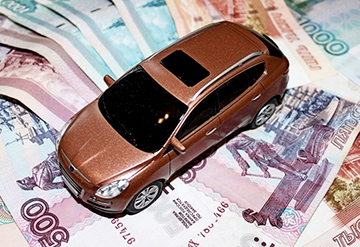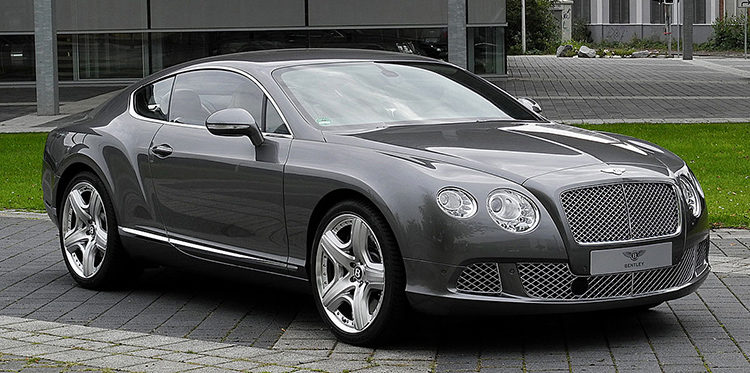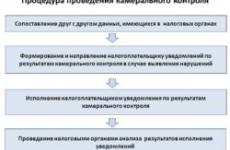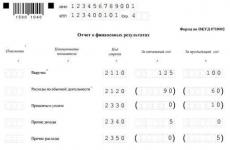Questions about transport tax
The duty to pay transport tax is fixed by federal tax legislation, but each region makes its own adjustments to the process of calculation and payment, including the provision of benefits to certain categories of citizens. Transport tax in the Moscow region is regulated by a special law adopted in 2002 No. 129/2002-OZ.
Regardless of status, every taxpayer who owns a vehicle is obliged to pay a fee, except in certain cases when an exemption is granted for this type of charge. Since there are different rates for different regions, to clarify the peculiarities of the accrual procedure, it is necessary to contact the territorial department of the Federal Tax Service, to which the taxpayer belongs. When establishing the maximum allowable amount of fiscal deductions, they proceed from the same restriction for all the subjects of the Russian Federation - the tax cannot exceed the national norm more than tenfold.
For car owners living in the Moscow region, the same tax deadline applies, if we are talking about ordinary citizens. For individuals, the transfer obligation must be fulfilled before the onset of December. It should be noted that the amount transferred to the state budget account refers to the results of the previous year.
Previously, a different period of payment of transport tax was valid, not later than September inclusive. Now, in order to avoid fines and accrual of penalties, it is enough to pay tax until December. Those. in 2017, the tax is paid for 2016. For the car, which was operated in 2017, the tax will be paid until December 1, 2017.
Settlement procedure
 The process of determining the amount of transport tax is quite simple. For self-calculation of the amount, it is necessary to have tabular information with an approved tariff scale, depending on how powerful the vehicle was used by citizens. It should also be borne in mind that the obligation to pay applies to all motorists, even those who have not used the car, stored in the garage or not on the go.
The process of determining the amount of transport tax is quite simple. For self-calculation of the amount, it is necessary to have tabular information with an approved tariff scale, depending on how powerful the vehicle was used by citizens. It should also be borne in mind that the obligation to pay applies to all motorists, even those who have not used the car, stored in the garage or not on the go.
To obtain the amount of tax transfer, you need to know how much horsepower is in the engine and what is the current rate used in the Moscow region. To determine the amount required to perform the multiplication of the two components.
Another important detail on charges is that the rate from 2015 is increasing on cars belonging to expensive vehicles (from 3 million rubles).
The amount of fiscal deduction depends on several components:
- model year;
- vehicle power;
- the status of the owner and other features of the application of regional laws.
Rates used in the Moscow region
The exact value of tariffs for transport tax is approved at the level of the regional government. When assigning rates, the following characteristics and features of transport are taken into account:
- its type;
- horsepower;
- the purpose of exploitation;
- where will be used.
In most cases, transport taxation of individuals in the Moscow region is represented by passenger cars. The owner of the transport, living in Moscow, can independently determine the upcoming costs, based on the table value of the rate according to its type of vehicle. For example, among cars of a passenger class, the rate may vary in the range from 10 to 150 rubles.
To calculate the tax on the most common types of vehicles, you can use the values from the following table:
For other types of transport rates vary in a certain range:
Benefits for Muscovites who own transport
 There are not so many benefits in the Moscow region. Nevertheless, they exist and take into account the need for social support of certain categories of the population. Transport tax is not paid:
There are not so many benefits in the Moscow region. Nevertheless, they exist and take into account the need for social support of certain categories of the population. Transport tax is not paid:
- organizations whose activities are directly related to persons with disabilities and their employment, as well as the employment of pensioners;
- Heroes of Russia, USSR, holders of the Order of Glory;
- participants in the aftermath and victims of the Chernobyl accident;
- persons with disabilities of 1-2 groups;
- disabled childhood.
In the video about the benefits
These citizens apply to the local unit of INFS and write an application for the appointment of benefits, applying to the application documents confirming the benefit, passport, and certificates for movable property. The law allows the release of any of the above categories of beneficiaries for only one type of transport. If a person owns two cars, the second will have to pay tax.
There are other additional conditions. Exemption from the collection in favor of the budget is possible only for those whose car has an engine up to 150 hp, or whose motorcycle is less than 50 hp. If a person has a third disability group, the Moscow government allows paying only half of the amount due.
Transport tax is a regional tax, as opposed to property and land taxes.
All the money for it goes to the budget of the relevant subject of Russia. This is a fairly familiar payment for Russian citizens, because many of them have cars and know that they will receive a letter from the tax inspectorate once a year calling them to be paid.
However, not everyone knows the many nuances that accompany this type of state collection.
What is car tax on cars in 2017 and what are car owners required to pay? The answer to these and many other questions can be found by reading this article.
Before you put the car up for sale, the future seller needs to find out in advance whether it is necessary to pay tax and calculate how much money from the transaction will have to be given to the state. This amount will be a vehicle tax. It is more important to know whether he will be required to file tax returns in connection with the sale of the car.
 This type of fee is subject to payment by citizens on whom the vehicle is registered.
This type of fee is subject to payment by citizens on whom the vehicle is registered.
In addition to cars, this list also includes many other means of transportation.
For example, scooters, motorcycles, buses, airplanes, yachts, snowmobiles. Nevertheless, it is more common for vehicle owners to charge vehicle tax.
That is, the duty to pay transport tax arises from a person from the moment the registration with a state body of a particular transport occurred. A tax on the car begins to be charged after the driver officially put it on record in the traffic police.
In this case, it does not matter at all whether the registered car driver is using. It may be that the car is in his garage for a long time, because it is broken. Or the car is stolen. To pay tax in any case will have to. In such a situation, you can advise one thing: as soon as any problems occurred with the car (a serious accident that led to a breakdown, theft, etc.), it is better to immediately remove it from the register in GIDBDD so as not to pay tax.
 There are also opposite cases. This is when the size of the payment should increase due to an increase in the number of horsepower of an auto engine.
There are also opposite cases. This is when the size of the payment should increase due to an increase in the number of horsepower of an auto engine.
But some car owners prefer not to notify the tax inspectorate about the increase in the power of their cars.
This behavior does not correspond to the letter of the law, and for failure to report to the traffic police about replacing parts of greater power, the driver will face a fine, which can seriously hit his wallet.
In order to notify the State Traffic Inspectorate about this, it is necessary to immediately write a corresponding application to this body. And traffic police, in turn, will make changes to the register and registration certificate of a car. This will be the basis for increasing the amount of tax paid.
According to regional authorities, the amounts paid by residents of the transport tax entities are used to maintain the good condition of Russian roads. Therefore, however, it is not recommended to neglect the payment of this payment.
How to calculate transport tax in 2017
How much is car tax? Before buying a car, it is necessary to calculate in advance what the tax will be and whether it will be profitable to have a personal means of transportation if you have to pay for it every year in favor of the state.
The tax amount is calculated by the tax service itself and prescribes it in the notice. However, it is better for the taxpayer to double-check the data received by mail so that there is no mistaken overpayment. But how to calculate the tax for the car?
The formula for calculating the transport tax consists of the following components:
- car tax rate for 2017;
- how many months a year the owner of the car owned it;
- horsepower;
- a multiplying factor if the car is a luxury item (this is a VIP car class).
Having all the listed indicators, you just need to substitute them in the following classical formula for calculating:
For those car owners who bought the car less than a year ago, a slightly different formula works:
For cars falling under the luxury category, the following formula applies:
And for luxury cars that were purchased less than a year ago, a slightly different equation is applied:
If, after self-calculation, there was a discrepancy between the amount received and the amount indicated in the notice, you should immediately contact the tax authority for correcting the error. This can be done not only through a personal appeal or in a letter, but also in a personal account on the website of the Federal Tax Service of Russia.
Tax on a car almost always has the exact figure. That is, if the amount of tax will have so many rubles and more than 50 kopecks, then you need to round off to the next ruble, and if less, then deduct extra kopecks.
Vehicle tax per horsepower
That horsepower is an indicator of the power of any car. One horsepower has such characteristics:

- It shows the power capacity required to lift a weight of 75 kg. per meter height, for 1 second of time.
- It is measured in kW or in the number of watts (for example, in Russia it is equal to 735.5 watts).
As it was already clear from the formula above, horsepower is a unit that directly participates in the formation of the amount of tax for transport. But how can a citizen determine how much power his car has?
There are several ways to do this.
- If there are documents for the car, they should find the serial number of the engine and add the last 6 digits in pairs, and the resulting result should be divided by 8.5. The number obtained as a result of this calculation is the number of horsepower cars.
- If the car owner knows the engine power of his car in kW, you can multiply this number by a factor of 1.35962, then you will get the value in hp
The list of cars falling under the tax on luxury
 In 2017, the Ministry of Industry and Trade of the Russian Federation submitted another list of expensive cars of certain brands and models for which their owners will have to pay an additional luxury tax.
In 2017, the Ministry of Industry and Trade of the Russian Federation submitted another list of expensive cars of certain brands and models for which their owners will have to pay an additional luxury tax.
According to the law, this tax applies to cars, the cost of which is as follows.
- Exceeds 3 million rubles, but not more than 5 million. This includes the largest number of cars - 354 models.
- From 5 to 10 million rubles - 238 models.
- From 10 to 15 million rubles and above - 116 types of cars.
For the first group of vehicles, the following indicators apply:
- up to 1 year - 1.5;
- from 1 to 2 years - 1.3;
- from 2 to 3 years - 1.1;
- more than 3 years - 1.0.
For the second group: if the age of the car is up to 5 years, then the coefficient is 2.0.
For the most expensive cars (from 10 to 15 million) - a coefficient of 3.0, subject to the "age" of cars up to 10 years.
The list of luxury cars is updated and approved annually.

Bentley Continental falls under luxury tax
The list set for today has significantly expanded, compared with 2015: then it included 189 models, and now 708. It includes all well-known car brands. For example, such as Audi, VOLVO, Bentley, BMW, Chevrolet, Jaguar, Aston Martin, Mercedes-Benz, Nissan and many others.
A complete list, if desired, can be found on the Internet. Various sites publish current data for today. Thus, for all the machines that are in such a list, the formulas for calculating the tax described above will be applied.
Car sales tax in 2017
 If a citizen decides to sell his car, he is obliged to pay tax to the state’s treasury when making this transaction.
If a citizen decides to sell his car, he is obliged to pay tax to the state’s treasury when making this transaction.
This payment refers to the personal income tax (PIT). But you need to know in which case this obligation arises.
The law states that a person is obliged to pay tax on the sale of a car only from the moment he acquired it, less than 3 years have passed. But from which day to consider the fact that ownership began? It depends on the base.
- If the car was handed over to a citizen as an inheritance - from the date of opening the inheritance, namely, from the moment of death of the testator.
- When a car is given by one person to another - from the moment of signing the deed of gift.
- When buying a car - from the date of conclusion of the contract of sale.
If a motorist wants to sell his "iron horse" before the three-year term expires, he will have to pay personal income tax of 13% of the price at which he sold it. And for non-residents a higher rate of 30% is applied. Documentary proof of the amount of the sale will serve as a contract of sale signed by the parties.
Since the traffic police offices interact with the tax inspectorates, there, soon after the transaction, the data on the sale of cars will be received. And, if a citizen is obliged by law to pay tax, he will receive a notice about it.
And after the three-year period has passed, you can sell the car and not worry about the fact that the tax will receive a tax payment notice. No need to file any declarations.
As with other types of taxes, the tax on the sale of cars can be deducted. This option will be relevant when the car was purchased by a citizen at a price less than the one at which he sells it. For example, the car was bought for 500 thousand, and sold a year later for 650 thousand. NDFL will be calculated from the amount of 150 thousand. This rule also applies if the person has all the documents preserved.
In order to pay a smaller amount of tax, many drivers specifically indicate in the contract a small cost of a car, which is absolutely not commensurate with its real price.
But such actions unscrupulous seller will not go unnoticed.
Yes, and the buyer remains a copy of the contract, in confirmation of the transaction and the amount of money spent by him.
The key to success and transparency of the sale of the car is a properly drafted contract with relevant data and a correctly completed tax declaration of the approved 3-PIT form. The declaration must be submitted to the tax in the period from January 1 to April 30 of the year following the one in which the car was sold.
As you can see, acquiring a car, you need to be prepared for tax obligations and be able to correctly calculate the amount of tax. And when selling cars it is not enough just to make the deal itself. It is also important to prepare for the subsequent taxation, having correctly issued all the documents accompanying it.
Dear readers, this article may be outdated, use the free consultation in the form below.
Organizations - owners of vehicles submit a declaration at the end of the year and transfer transport tax. The article recalls the rates of transport tax in 2017 and the procedure for calculation.
Transport tax depends on the tax base and the tax rate (Section 2, Art. 362 of the Tax Code of the Russian Federation). For cars and trucks base power is expressed in horsepower. Information about the power is the TCP.
The tax rate can be obtained from the regional law. Rates vary even in neighboring areas. For example, in Moscow the tax rate on cars with a capacity of up to 100 hp. - 12 rubles, and in the Moscow region - 7 rubles.
Base rates set by the Tax Code. They are listed in the table below. Regions have the right to change these rates, but not more than 10 times (Section 2, Art. 361 of the Tax Code of the Russian Federation).
Transport tax rates in 2017. Table
| Object of taxation | Tax rate, rubles |
|---|---|
| Passenger cars with engine power (with each horsepower): | |
| 2,5 | |
| 3,5 | |
| over 150 hp up to 200 hp (over 110.33 kW to 147.1 kW) inclusive | 5 |
| 7,5 | |
| 15 | |
| Motorcycles and motor scooters with engine power (with each horsepower): | |
| up to 20 hp (up to 14.7 kW) inclusive | 1 |
| over 20 hp up to 35 hp (over 14.7 kW to 25.74 kW) inclusive | 2 |
| over 35 hp (over 25,74 kW) | 5 |
| Buses with engine power (with each horsepower): | |
| up to 200 hp (up to 147.1 kW) inclusive | 5 |
| over 200 hp (more than 147.1 kW) | 10 |
| Trucks with engine power (with each horsepower): | |
| up to 100 hp (up to 73.55 kW) inclusive | 2,5 |
| over 100 hp up to 150 hp (over 73.55 kW to 110.33 kW) inclusive | 4 |
|
over 150 hp up to 200 hp (over 110.33 kW to 147.1 kW) inclusive |
5 |
| over 200 hp up to 250 hp (more than 147.1 kW to 183.9 kW) inclusive | 6,5 |
| over 250 hp (over 183.9 kW) | 8,5 |
| Other self-propelled vehicles, pneumatic and caterpillar vehicles and mechanisms (with each horsepower) | 2,5 |
| Snowmobiles, snowmobiles with engine power (with each horsepower): | |
| up to 50 hp (up to 36.77 kW) inclusive | 2,5 |
| over 50 hp (over 36.77 kW) | 5 |
| Boats, motor boats and other water vehicles with engine power (with each horsepower): | |
| up to 100 hp (up to 73.55 kW) inclusive | 10 |
| 20 | |
| Yachts and other motor-sailing vessels with engine power (with each horsepower): | |
| up to 100 hp (up to 73.55 kW) inclusive | 20 |
| over 100 hp (over 73.55 kW) | 40 |
| Hydrocycles with engine power (with each horsepower): | |
| up to 100 hp (up to 73.55 kW) inclusive | 25 |
| over 100 hp (over 73.55 kW) | 50 |
| Non-propelled (towed) vessels for which gross tonnage is determined (for each registered ton of gross tonnage) | 20 |
| Airplanes, helicopters and other aircraft having engines (with each horsepower) | 25 |
| Aircraft with jet engines (with each kilogram of thrust) | 20 |
| Other water and air vehicles that do not have engines (per vehicle unit) | 200 |
Transport Tax Rates
Recall that the owners of trucks with a mass of more than 12 tons are required to transfer payment for the damage to roads in the Plato system. From July 3, 2016 you can reduce the transport tax on this fee.
Examples of calculating the vehicle tax in 2017
Example
The organization owns a car brand Mitsubishi Lancer, whose power 117 hp Tax rate - 25 rubles. The amount of tax for the year - 2925 rubles.
If, according to regional law, it is required to transfer monthly payments, then the tax for the year is transferred minus advances.
Example
Transportation tax for the year - 2,915 rubles. During the year, the organization transferred 2193 rubles. advance payments. The amount of tax payable - 732 rubles. (2915 rubles. - 2193 rubles.).
Trucks that transfer payment for damage to federal roads (Plato's system) are entitled to reduce the tax on this payment (clause 2 of article 362 of the Tax Code of the Russian Federation). In addition, for such cars do not need to transfer quarterly advances. If the damage charge is greater than the tax, then the amount of tax for the truck is zero.
Example
The company has a truck. During the year, the fee for harming the roads was 230 thousand rubles. The amount of tax for the year - 300 thousand rubles. The amount of tax payable - 70 000 rubles. (300,000 rubles. - 230,000 rubles.).
Example
The organization has a truck. During the year, the fee for harming roads was 330 thousand rubles. The amount of tax for the year - 300 thousand rubles. The amount of tax payable - 0 rubles. (330 000 rubles.\u003e 300 000 rubles.).
Organizations that own cars worth more than 3 million rubles pay an increased tax. The list of such cars is annually approved by the Ministry of Industry and Trade. Information about cars, the tax on which in 2016 should be increased, can be found on the official website of the ministry www.minpromtorg.gov.ru in the section “Lists and Registries”. The list of expensive cars for 2016.
Example
The organization owns a car brand Audi TTS Roadster quattro. Year of release - 2015, power - 310 hp The boost factor is 1.3. Tax rate - 35 rubles. Tax for the year - 14,105 rubles. (310 hp × 35 rub. × 1,3).
The organization could sell and buy a car for a year. It is necessary to pay the tax only for the full months during which the organization was the owner of the car. It is necessary to calculate the payment taking into account the ownership ratio. To calculate it, it is necessary to divide the full months, during which the company was the owner, by 12. A month is considered complete if (Section 3, Art. 362 of the Tax Code of the Russian Federation):
- the organization put the transport on the account in the traffic police until the 15th inclusive. If you put the car on the account of the 16th day and later, this month should not be taken into account when calculating the tax.
- the organization removed the car from the register in the traffic police after the 15th day. If the company ceased to be the owner of the car on the 15th and earlier, for a month of withdrawal it is not necessary to consider the tax.
Example
The organization acquired a car brand Mitsubishi Lancer 117 liters. with. September 25, 2016. The number of full months of ownership - three (October, November, December). The coefficient is 0.25 (3 months: 12 months). Tax rate - 25 rubles. The tax for the year is 731 rubles. (117 hp × 25 rubles. × 0.25).
Deadline for the payment of transport tax for organizations in 2017
Transport tax - regional. Therefore, the annual payment period, the order of payment of advances, benefits, etc. establish local authorities.
For example, in the Chelyabinsk Region, the Law of the Chelyabinsk Region dated November 28, 2002 No. 114-ZO. In this region, companies calculate and pay advances no later than the last day of the month following the reporting period. Organizations in this region must pay tax for 2016 no later than March 1, 2017.
In the capital, the tax is regulated by the law of Moscow dated 09.07.2008 No. 33. There is no requirement to pay advances in the law. The annual tax must be transferred no later than February 5, 2017 (clause 1, Article 3 of the Law of Moscow dated July 9, 2008 No. 33).
Penalties for incorrect calculation of vehicle tax
The company has the right to fine only in two cases: if it passed the declaration later than the deadline and if it understated the transport tax.
The company has passed the declaration later than the deadline. In this case, a fine is possible under article 119 of the Tax Code. The amount of the penalty is 5% of the amount of unpaid payments to rock. In this case, the minimum fine is 1000 rubles.
In the declaration of error - the company has calculated the tax morewhat it was necessary. In this case, the company will not be punished. After all, the budget is not hurt because of this.
In the declaration of error - the company accrued tax less. If you find that you have lowered the tax, you need to submit a clarification (clause 1 of article 81 of the Tax Code of the Russian Federation). As a general rule, late payment of fines and fines are imposed for tax payment. The amount of penalties is 1/300 of the refinancing rate for each day of delay (clause 4 of article 75 of the Tax Code of the Russian Federation). The amount of the fine is 20% of the tax not paid on time (paragraph 1 of article 122 of the Tax Code of the Russian Federation). To avoid a fine, pay interest and arrears before specifying.






